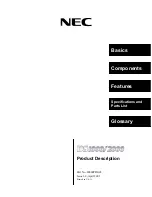
On HP-UX:
Supplied templates are stored in
/var/opt/amgr/templates/amgr/
to make it easier to
update templates with new releases of HP Application Discovery. New application templates
provided by HP can replace templates in this directory. Copies of these templates, which are
stored in
/var/opt/amgr/templates/local/
, are unaffected by release updates to the
software.
On Microsoft® Windows:
Templates are stored in the VSE install directory (
C:\Program Files\HP\Virtual Server
Environment\data\templates\
). For information on where HP VSE is installed by default,
see HP Insight Control Management Quick Setup Poster.
How Memory Usage is Calculated
Processes have private memory, which is owned privately by each process, and they have shared
memory. Shared memory can be shared (in theory) with none, one, some, or all other processes
on the same system.
In Application Discovery memory calculations are made for matched applications and displayed
in the detail screen of a host (total memory usage and by application), as shown in the following
image.
In Application Discovery, application memory shown is the sum of all private memory in use
by all the processes in that application and the sum of all shared memory in use by all the processes
in that application. That is, shared memory is displayed as though it is not shared. This means
that the totals shown for memory usage are an overstated approximation of actual memory usage
for any particular application.
Here is why accurately summing memory shared among processes is difficult to do:
•
The degree of sharing among processes is unknown. For a given process, the shared memory
can be shared with every process on the system, only some processes on the system, only
some processes within the application, or with all of the processes within the application.
•
The 'right' answer for how to sum shared memory for processes depends in part on how
the individual administrator uses the information for planning. For example, is the
administrator thinking of adding an application instance to the host? Is he or she thinking
of moving an application instance to another host? Is the administrator thinking of moving
the entire application to another host?
To arrive at a usable deterministic answer, all the shared memory for each process is summed.
This conservative calculation should allow you to safely estimate resource usage for the
applications shown.
Understanding Server Resource Consumption
Application Discovery consumes varying amounts of server resources as it goes about its work
of discovering application and system data for display and storage. To monitor this resource
usage, select the
Admin/Config
tab and then the
AD Server
tab.
How Memory Usage is Calculated
19
















































